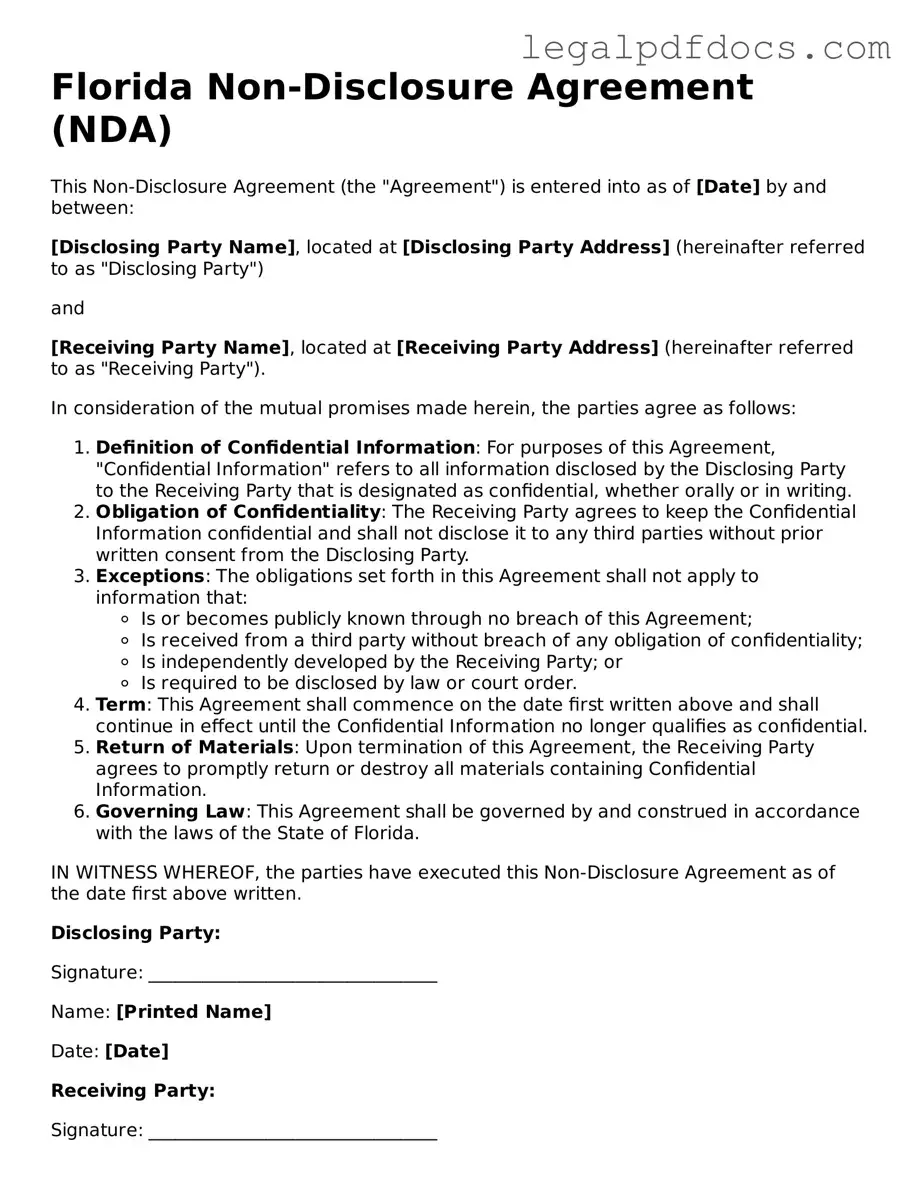In Florida, a Non-disclosure Agreement (NDA) serves as a crucial legal tool for protecting sensitive information shared between parties. This agreement is often used in various contexts, such as business partnerships, employment relationships, and investment discussions. By establishing clear terms, the NDA outlines what information is considered confidential, how it should be handled, and the consequences of unauthorized disclosure. It typically includes definitions of confidential information, obligations of the receiving party, and the duration of the confidentiality obligation. Additionally, the NDA may specify exclusions to confidentiality, such as information that is publicly available or independently developed. Understanding these key aspects is essential for anyone looking to safeguard their proprietary information in Florida. Whether you are a business owner, an employee, or an investor, being familiar with the elements of an NDA can help you navigate your legal obligations and protect your interests effectively.
